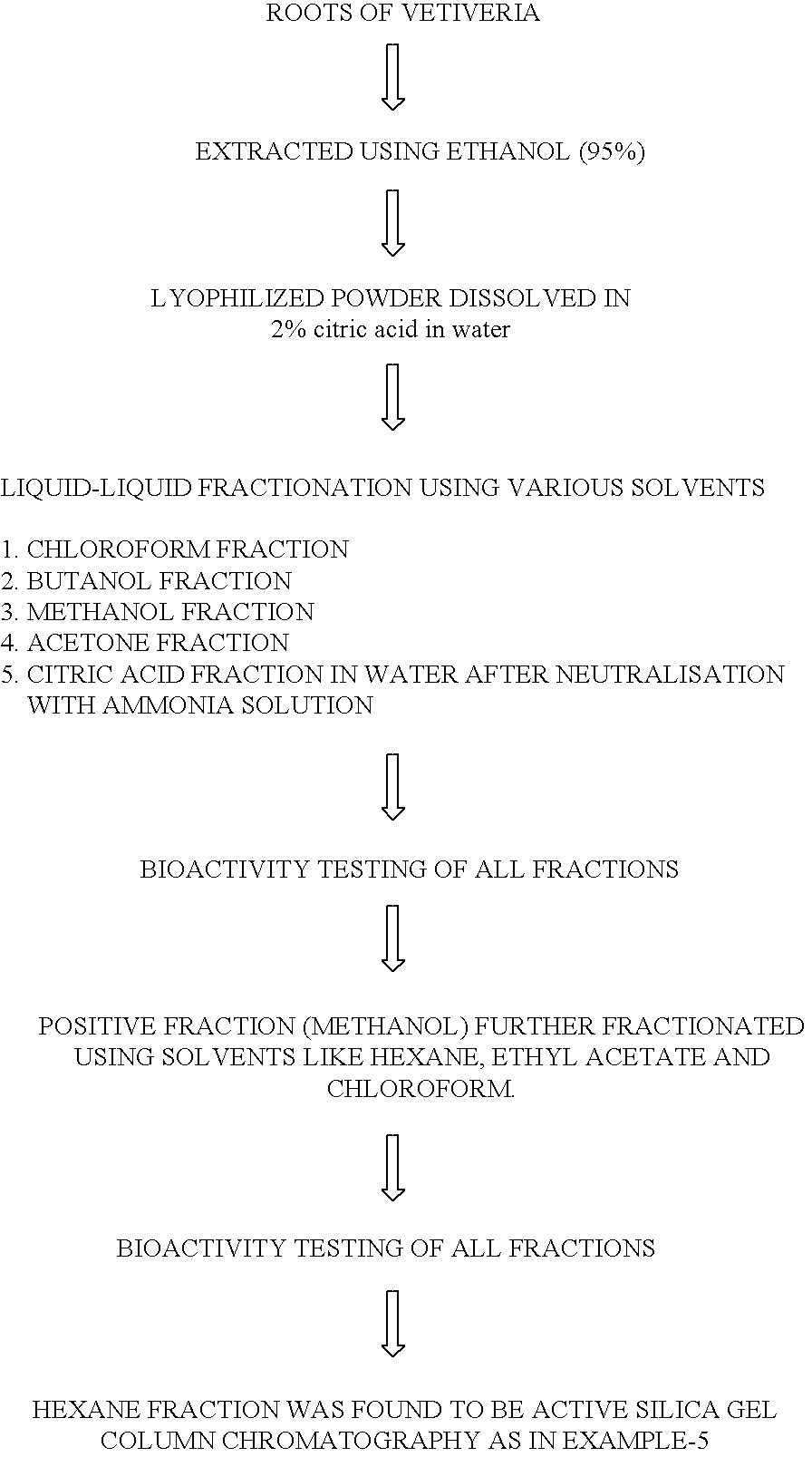Bioactive hexane fraction from Vetiveria zizanioides
a technology of vetiveria zizanioides and bioactive hexane, which is applied in the direction of biocide, plant/algae/fungi/lichens, antibacterial agents, etc., can solve the problems of limiting clinical usefulness and difficult cure of quinolone resistant infections, and achieve the effect of inhibiting the growth of multidrug resistant bacterial pathogens
- Summary
- Abstract
- Description
- Claims
- Application Information
AI Technical Summary
Benefits of technology
Problems solved by technology
Method used
Image
Examples
example-1
[0042] The roots of Vetiveria zizanioides genotype KS-1 grown in CIMAP farm harvested during the month of April was dried in shade and ground to fine powder and then extracted by dipping the plant material overnight in different solvents. The solvent was then evaporated in vacuo and the residue termed as root extracts was redissolved in dimethylsulfoxide (DMSO) at the required concentration and analysed for bioactivity.
example-2
[0043] The ethanolic extracted prepared as above was tested for their growth inhibitory property against a number of bacterial strains by disc diffusion assay a procedure commonly followed and can be performed by persons skilled in the art. The results indicated that the ethanolic extracted residue showed a surprisingly interesting inhibitory activity against many bacterial strains. Hence, to explore the potential of using the extracts as anti-microbial agents the ethanolic extracted was then fractionated using different solvents as follows: 1
example-3
[0044] The ethanolic extract of the roots of Vetiveria zizanioides was further fractionated by liquid-liquid chromatography using different solvents. The extracts were initially dissolved in citric acid containing water and the solvent extraction was performed with increasing degree of polarity. The solvent extracts obtained were then evaporated in vacuo and the residues were analysed for their anti-microbial activity by disc diffusion assays. The results as in table-1 indicate that the methanolic fraction exhibited maximum bioactivity against bacterial pathogens. We observed an interesting feature that the methanolic fraction does not inhibit the growth of wild type E. coli starin CA8000 but was inhibitory to the nalidixic acid resistant strains of E. coli DH5a, NK5819 and ET8000. These strains were resistant to nalidixic acid by virtue of carrying mutations in the gyrA gene, which also confers resistance to other flouroquinolones (FQ) such as ciprofloxacin, norfloxacin, levofloxac...
PUM
 Login to View More
Login to View More Abstract
Description
Claims
Application Information
 Login to View More
Login to View More - R&D
- Intellectual Property
- Life Sciences
- Materials
- Tech Scout
- Unparalleled Data Quality
- Higher Quality Content
- 60% Fewer Hallucinations
Browse by: Latest US Patents, China's latest patents, Technical Efficacy Thesaurus, Application Domain, Technology Topic, Popular Technical Reports.
© 2025 PatSnap. All rights reserved.Legal|Privacy policy|Modern Slavery Act Transparency Statement|Sitemap|About US| Contact US: help@patsnap.com

